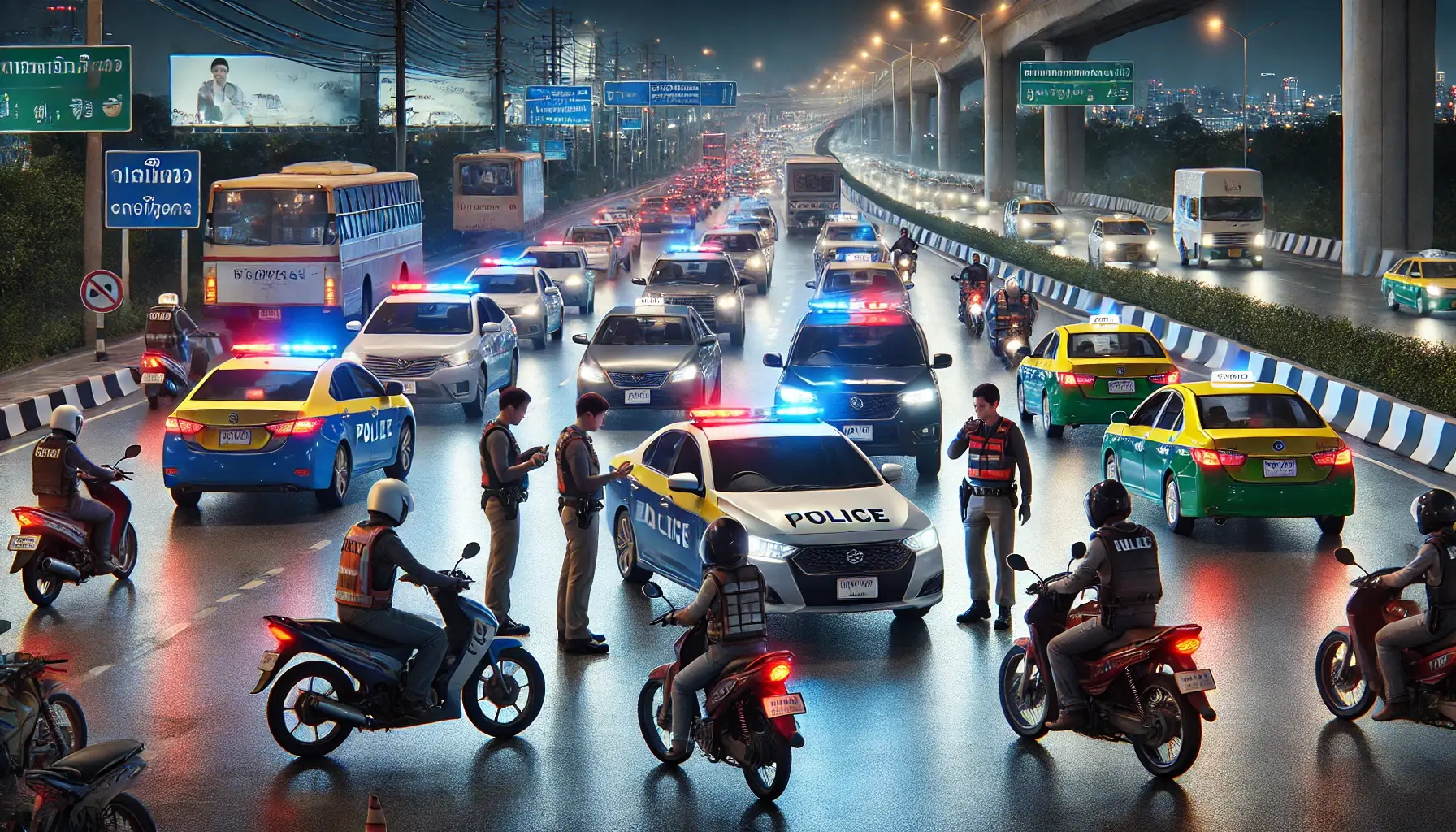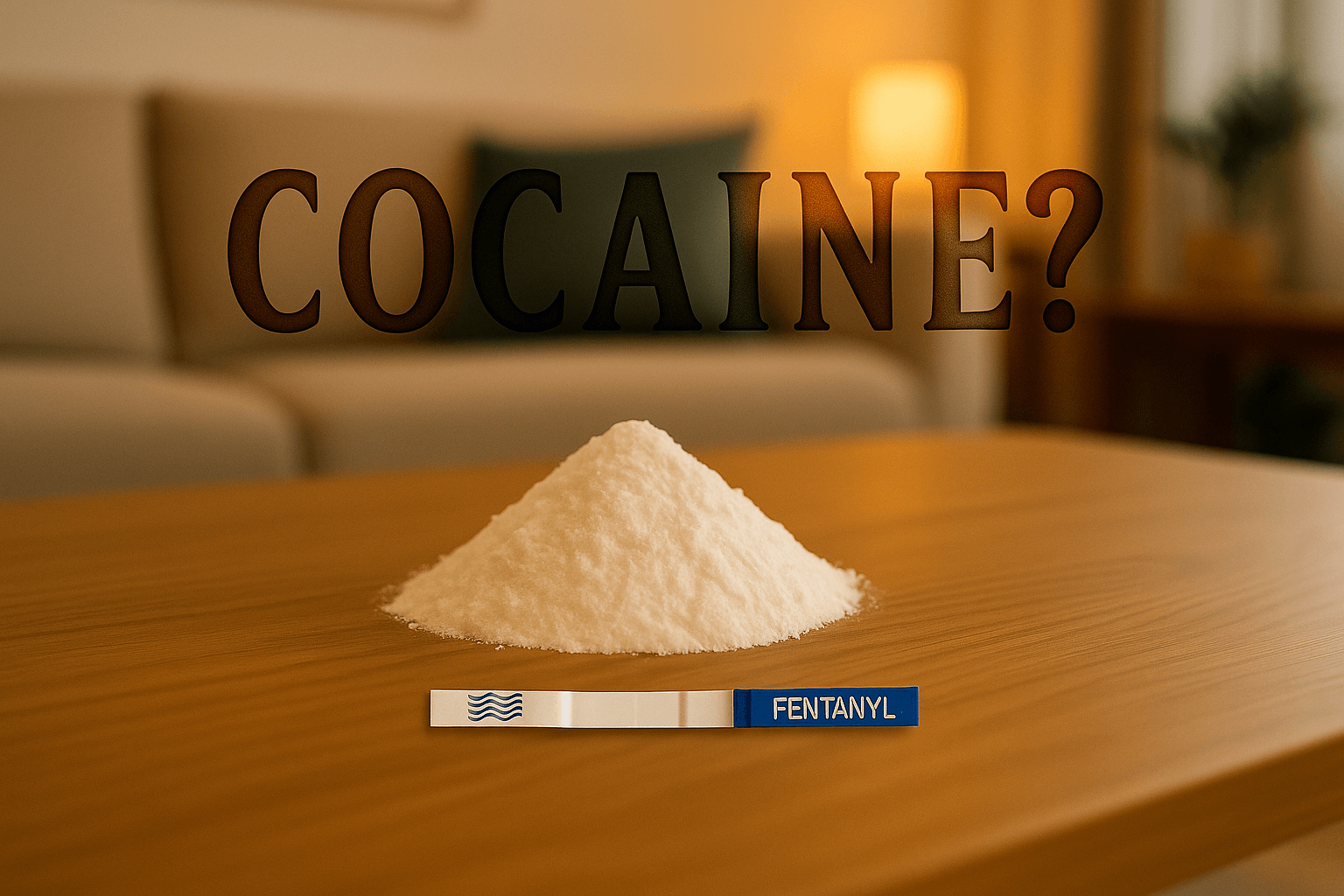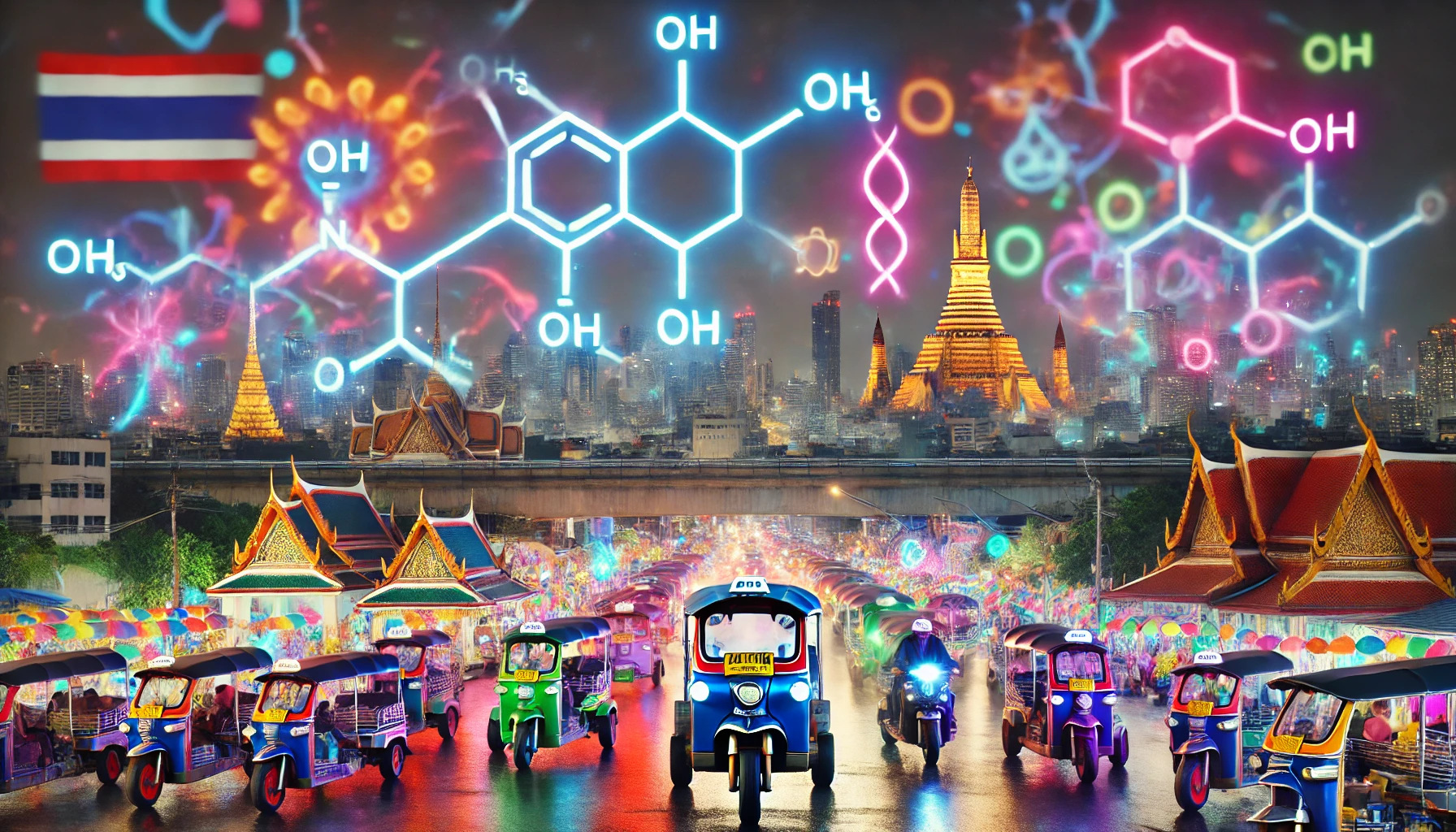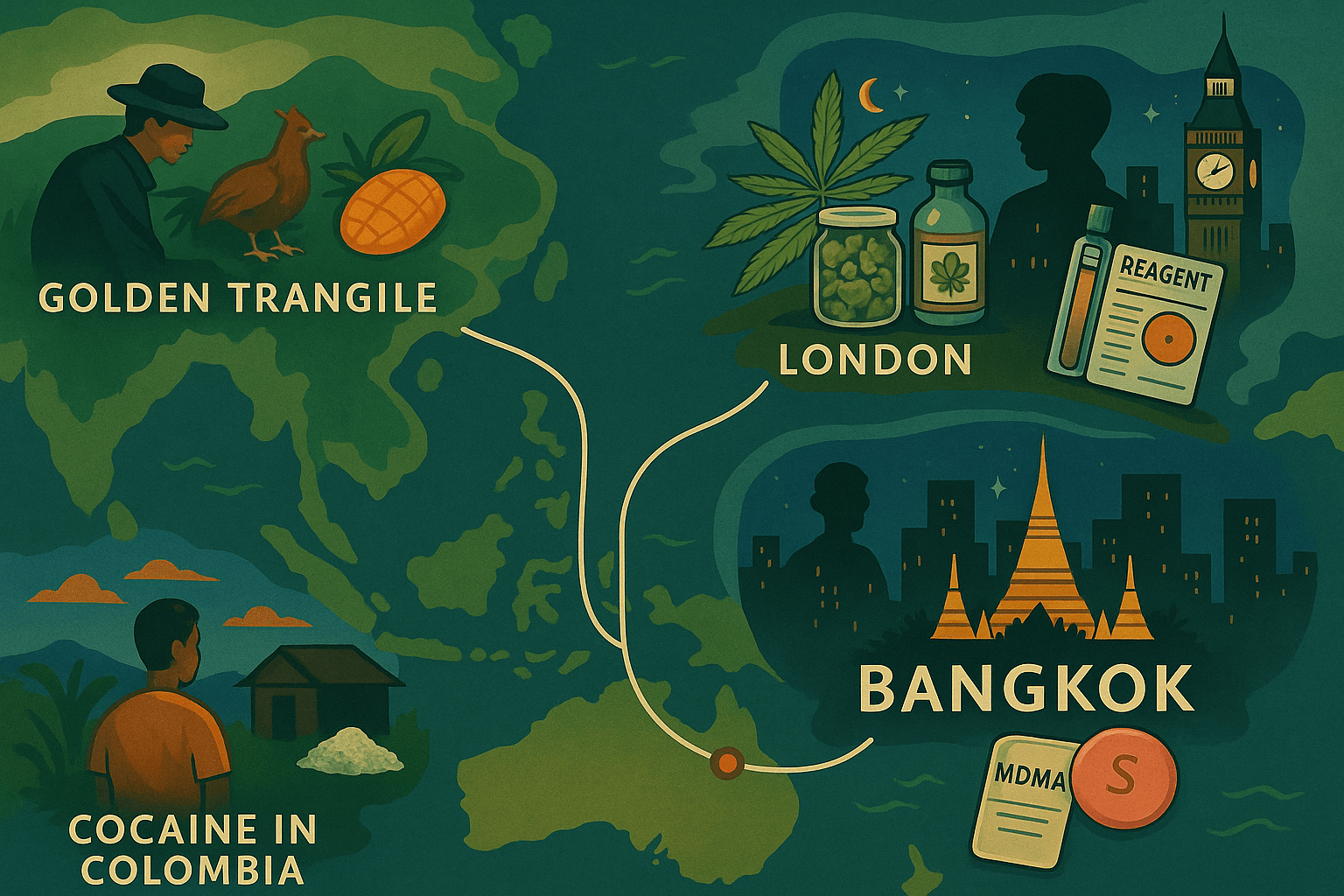Southeast Asia has long been at the center of the global drug trade, a reality shaped by its proximity to the infamous Golden Triangle. With its position as both a producer and transit hub for illicit substances, the region—particularly Thailand—has faced unique challenges in combating drug use and trafficking. The evolution of drug testing, from rudimentary experiments to modern harm reduction tools, tells a story of necessity, adaptation, and progress.
Today, drug testing is a vital part of harm reduction in Bangkok’s thriving nightlife and beyond, but its journey has been anything but straightforward.
Early Beginnings: The Opium Era
The Golden Triangle, where Thailand, Myanmar, and Laos meet, became synonymous with opium production in the late 19th and early 20th centuries. At the time, crude methods were used to assess the quality and potency of opium. Testing was rudimentary, involving heating the substance and observing its color and texture changes—practices more akin to artisanal craftsmanship than scientific analysis.
Interesting Fact: Before modern drug policies, opium use was not only legal in Thailand but taxed by the government. The state even operated opium dens, providing a regulated environment for consumption.
The 20th Century: From Colonial Policies to Early Synthetic Drugs
The mid-20th century saw a shift from opium to more potent drugs like heroin and methamphetamine. The introduction of synthetic drugs in the region coincided with increased law enforcement efforts to curb trafficking and use. Early drug testing in Thailand was largely for law enforcement, focusing on heroin purity and identifying smuggling routes.
1950s–1960s:
The U.S. presence during the Vietnam War brought heightened drug trafficking in Southeast Asia. Thailand became a key transit hub for heroin destined for Western markets.
Testing Challenges:
At this time, drug testing relied on basic chemical reactions, which were time-consuming and often inaccurate. These methods were limited to police labs, leaving users with no means to verify substances themselves.
Historical Anecdote:
During the 1960s, U.S. forces stationed in Thailand tested heroin for purity using improvised kits. The aim wasn’t harm reduction—it was intelligence gathering to track the drug trade.
The 1980s: The Rise of Methamphetamine and On-Site Testing
The 1980s brought the yaba epidemic to Thailand. Yaba, a mixture of methamphetamine and caffeine, became popular among laborers for its stimulant effects. With its widespread use, Thai authorities introduced early on-site testing methods for law enforcement.
Roadside Checkpoints:
Police used urine testing kits to detect methamphetamine. While innovative for its time, these kits were criticized for false positives and lack of accuracy.
Emerging Public Health Concerns:
By the late 1980s, Thailand began to recognize the public health implications of widespread drug use, but harm reduction wasn’t yet part of the conversation.
Trivia: The term “yaba” translates to “crazy medicine.” It was initially marketed to boost productivity but soon became associated with addiction and erratic behavior.
1990s: The War on Drugs and Expanding Drug Testing
The 1990s marked a turning point in Thailand’s drug policies. Under Prime Minister Thaksin Shinawatra, the War on Drugs intensified, with mass crackdowns and expanded drug testing initiatives.
School and Workplace Testing:
Random drug testing became common in schools and workplaces. Urine tests were the primary method, focusing on detecting methamphetamine use.
Controversial Methods:
While testing expanded, critics argued that punitive approaches, including arrests following positive tests, drove users away from seeking help.
Historical Context:
The late 1990s also saw an increase in yaba production in Myanmar, with the drugs smuggled through Thailand. This surge necessitated more advanced testing techniques to identify new adulterants and synthetic compounds.
2000s: Harm Reduction Gains Traction
The early 2000s brought a shift toward harm reduction, influenced by global movements advocating for drug education and safety over punitive measures. Organizations like the UNODC and local NGOs began promoting harm reduction strategies in Thailand.
Introduction of Reagent Kits:
Reagent testing kits, capable of identifying MDMA, methamphetamine, and other substances, became accessible to harm reduction advocates.
Bangkok Nightlife:
As Bangkok emerged as a global party destination, the need for drug testing in the nightlife scene grew. Tourists and locals alike sought ways to verify the safety of substances before use.
Anecdote: In 2008, a well-known Bangkok DJ hosted the city’s first harm reduction workshop, distributing reagent kits and demonstrating how to test MDMA pills for purity. This grassroots effort was a turning point for the local scene.
2010s: The Fentanyl Threat and Advanced Testing
By the 2010s, the global drug market had shifted again, with fentanyl—a powerful synthetic opioid—emerging as a deadly adulterant. While fentanyl contamination was less common in Southeast Asia than in North America, its risks prompted harm reduction groups in Bangkok to introduce fentanyl test strips.
芬太尼试纸:
Easy-to-use and portable, these strips became critical for recreational users wanting to check substances like MDMA or cocaine.
Focus on Festivals:
Major events like Wonderfruit and Neon Countdown incorporated harm reduction initiatives, including discreet testing stations.
Fun Fact: Bangkok’s underground rave scene played a key role in normalizing drug testing, with party organizers often encouraging attendees to use test kits.
Today: Accessible Drug Testing for All
Drug testing in Bangkok has evolved into a widely accepted harm reduction tool. Happy Test Shop is the leading test kit provider in Bangkok and makes it easy for users to access reliable kits, including for MDMA, methamphetamine, cocaine, and fentanyl. Testing is no longer just for law enforcement; it’s a personal safety measure embraced by individuals, NGOs, and festival organizers.
Modern Kits:
Today’s drug testing kits are fast, accurate, and discreet, providing results in minutes.
Harm Reduction Education:
Workshops, online resources, and testing services are now part of Bangkok’s nightlife culture, reflecting a shift toward safer, more informed practices.
Call to Action:
If you’re in Bangkok, ensure your safety with reliable drug testing kits. Visit 快乐测试店 to explore our range of tests for MDMA, methamphetamine, cocaine, fentanyl, and more. Stay happy, stay safe.
Sources:
- United Nations Office on Drugs and Crime (UNODC). “Synthetic Drugs in East and Southeast Asia: Latest Trends and Challenges.”
- Jenkins, P. (1999). 东南亚的禁毒战争. HarperCollins.
- Dixon, R. (2005). Methamphetamine and the Global Drug Trade. University of California Press.
- “Thailand’s Drug Testing Policies,” Bangkok Post, 2020.
- Harm Reduction International. “Global Harm Reduction Report: Southeast Asia Focus,” 2021.
- Sornchai, C. (2008). “From Yaba to Ice: Methamphetamine’s Transformation in Thailand,” Thai Journal of Public Health.
- “Drug Testing at Thai Festivals: A New Approach,” South China Morning Post, 2022.
- Local accounts from harm reduction organizations in Bangkok, 2010-2023.




